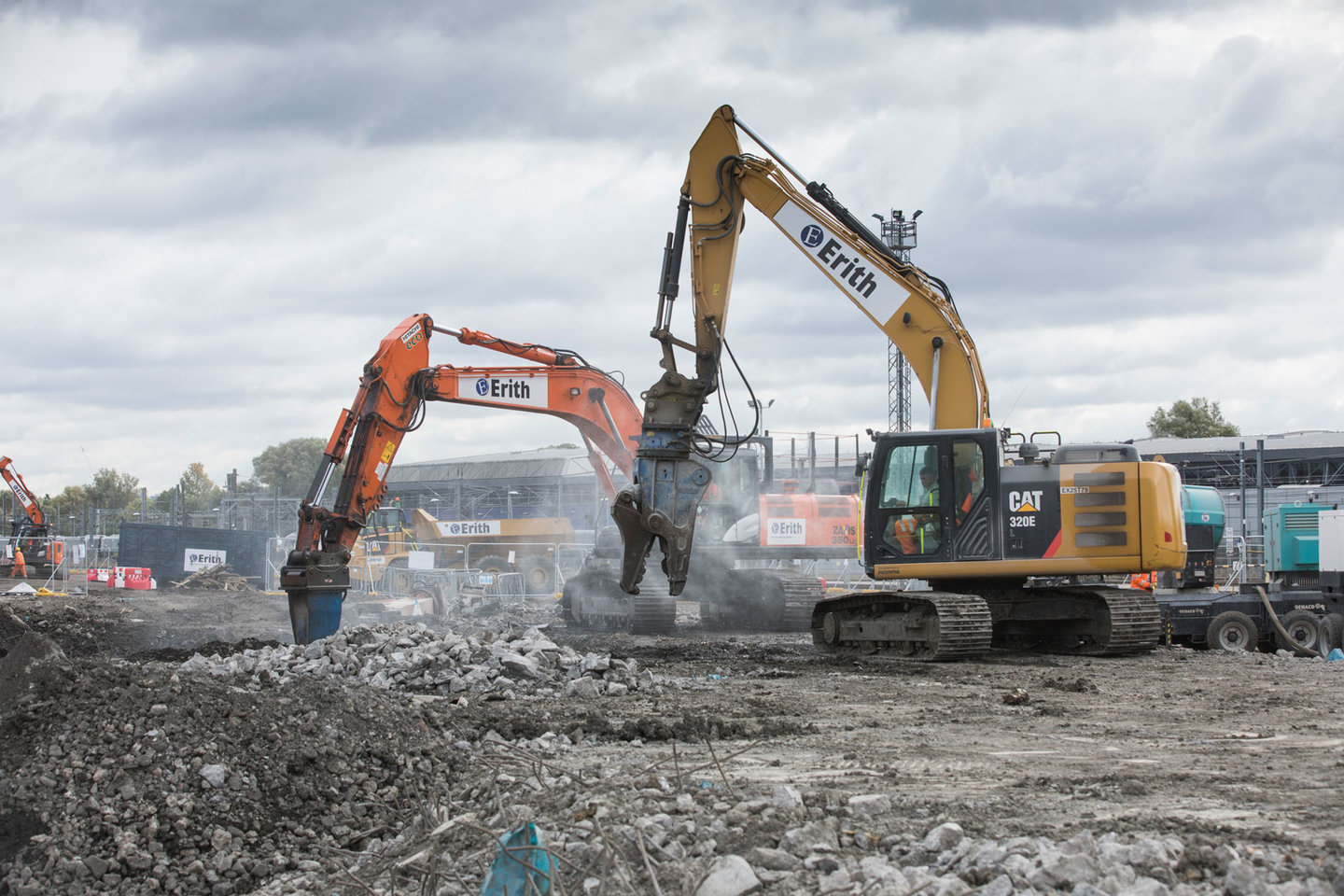Station design
T
he history of the railway dates back over 2,000 years, with primitive concepts of tracked transport going back to the Ancient Greeks.
But it took the invention of the steam power, which coincided with the beginning of the industrial revolution in the early 19th century, for railways to start playing a central role in local and international trade.
In the UK particularly, personalities like Richard Reynolds, George Stephenson and Matthew Murray were among some of the most illustrious contributors to the development of rolling stock and machinery used on the first railway tracks.
While similar projects were carried out almost simultaneously in other parts of Europe as well as the US, the widespread presence of mines in the UK and its access to the latest technologies made it the unchallenged leader in the field of railway technologies.
Yet, while initially the UK’s colonial aspirations encouraged it to build more railways in countries like India, with the arrival of World War I, its supremacy in the field of rail technology started to decline.
This paved the way for the rise of the US, starting a hegemony that would last until the late 1960s. Benefiting from the industry’s increasing reliance on fossil fuels, Americans were at the forefront of the rail technology exporting market for several decades.
However, the US’ failure to take a strong leadership in the market, combined with the rise of new powerful countries like China and Japan, led to the start its slow decline in the market.
Moving into the 21st century, the industry is now shifting from diesel to renewable energy, and new technologies emerge every day in the four corners of the world. As such, new exporters are following suit and consolidating their role in the market.
OOC aerial
On 5 February, HS2 Ltd revealed design images for the new Old Oak Common high-speed rail station, which is set to become a London ‘super-hub’ when the UK’s High-Speed 2 (HS2) railway service opens in 2026.
Nestled in north-west London, half a kilometre south of Willesden Junction station, the Old Oak Common site – currently a rail depot for Great Western Railway and Heathrow Express trains – will host the largest sub-surface station to be built in the UK, with a length of 1km and a depth of 20m below ground level.
The station will incorporate six underground platforms for high-speed HS2 services, which in the project’s first phase will be able to carry passengers to London Euston in nine minutes and to Birmingham Curzon Street in 38 minutes, as well as an interchange with new Elizabeth Line (Crossrail) services.
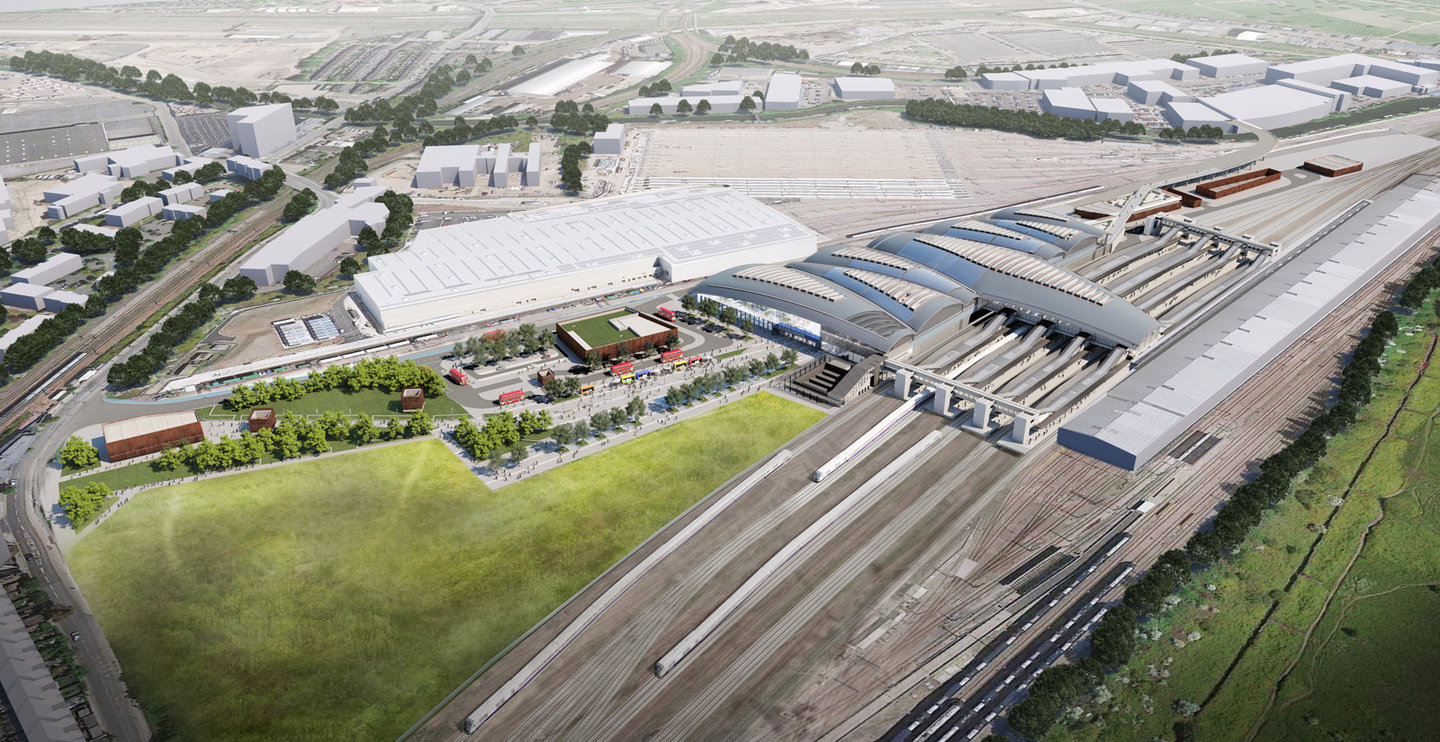
OOC night
As well as the green space pictured in the aerial image above, which HS2 Ltd says could feature broad-leafed trees, water features and outdoor event spaces, the design by WSP and architecture firm WilkinsonEyre envisions an open entrance plaza that is highly pedestrianised but also allows for easy bus access.
The station is intended to become a nexus in a wider regeneration scheme for the area, developing a new neighbourhood in the former industrial district with more than 25,000 new homes and supporting up to 65,000 jobs. The broader project is being led by the Mayor of London’s Old Oak and Park Royal Development Corporation (OPDC).
“In line with Mayoral policy we will be using the opportunity offered by the HS2 station, which we are now beginning to see take real shape, to create a vibrant new quarter of London that will bring jobs, housing and a whole new social infrastructure,” said OPDC chairman Liz Peace.
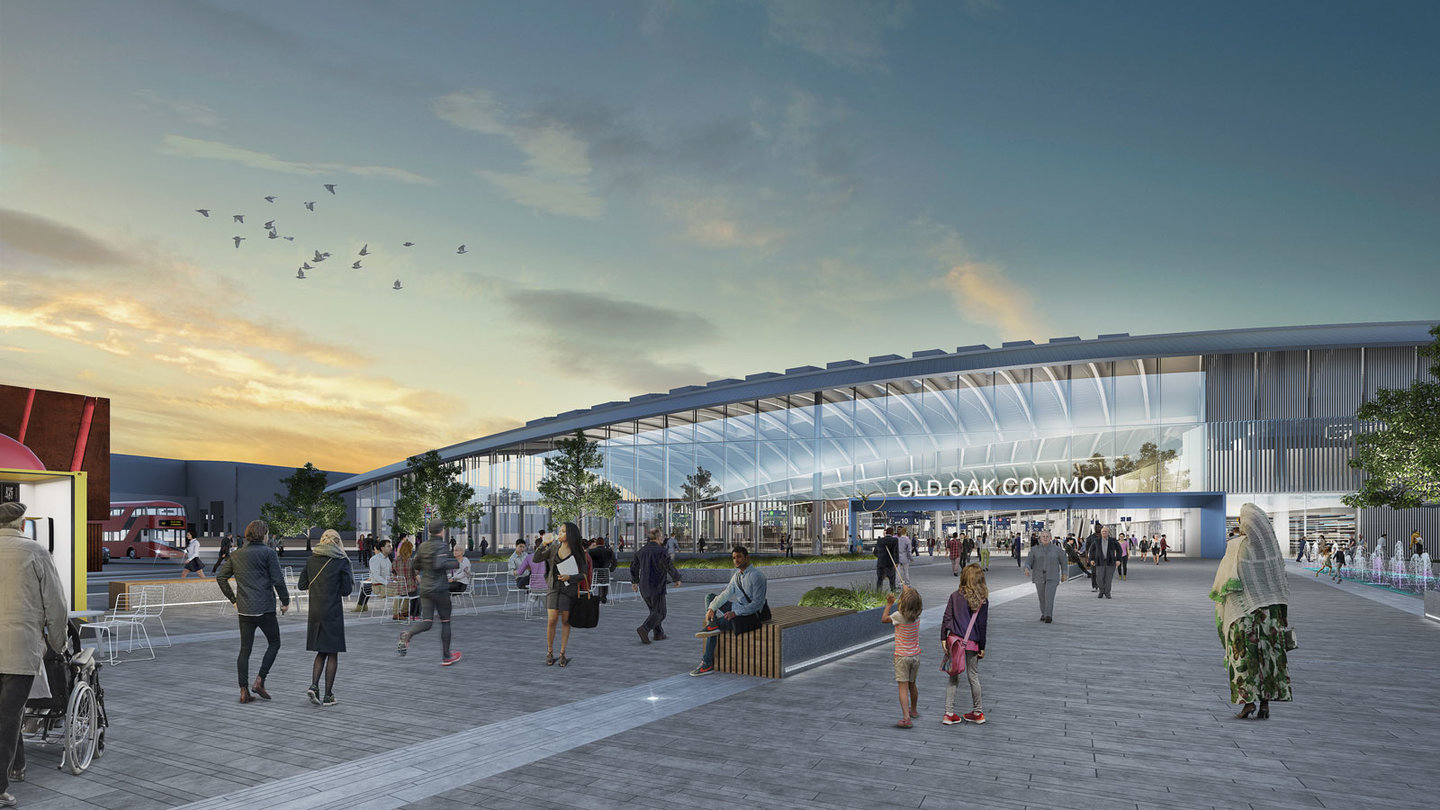
OOC roof detail
Old Oak Common’s main concourse will link the two halves of the station, with a roof form inspired by “our Victorian railway heritage”, according to WSP’s project director for Old Oak Common Adrian Tooth.
Upon completion, the station is expected to become the UK’s best-connected rail interchange, serving around 250,000 passengers daily.
“Linking HS2 and Crossrail, our new station will be a landmark piece of architecture at the heart of the [OPDC] development, designed around the passenger to ensure seamless, accessible and stress-free travel,” said HS2 Old Oak Common project director Matthew Botelle.
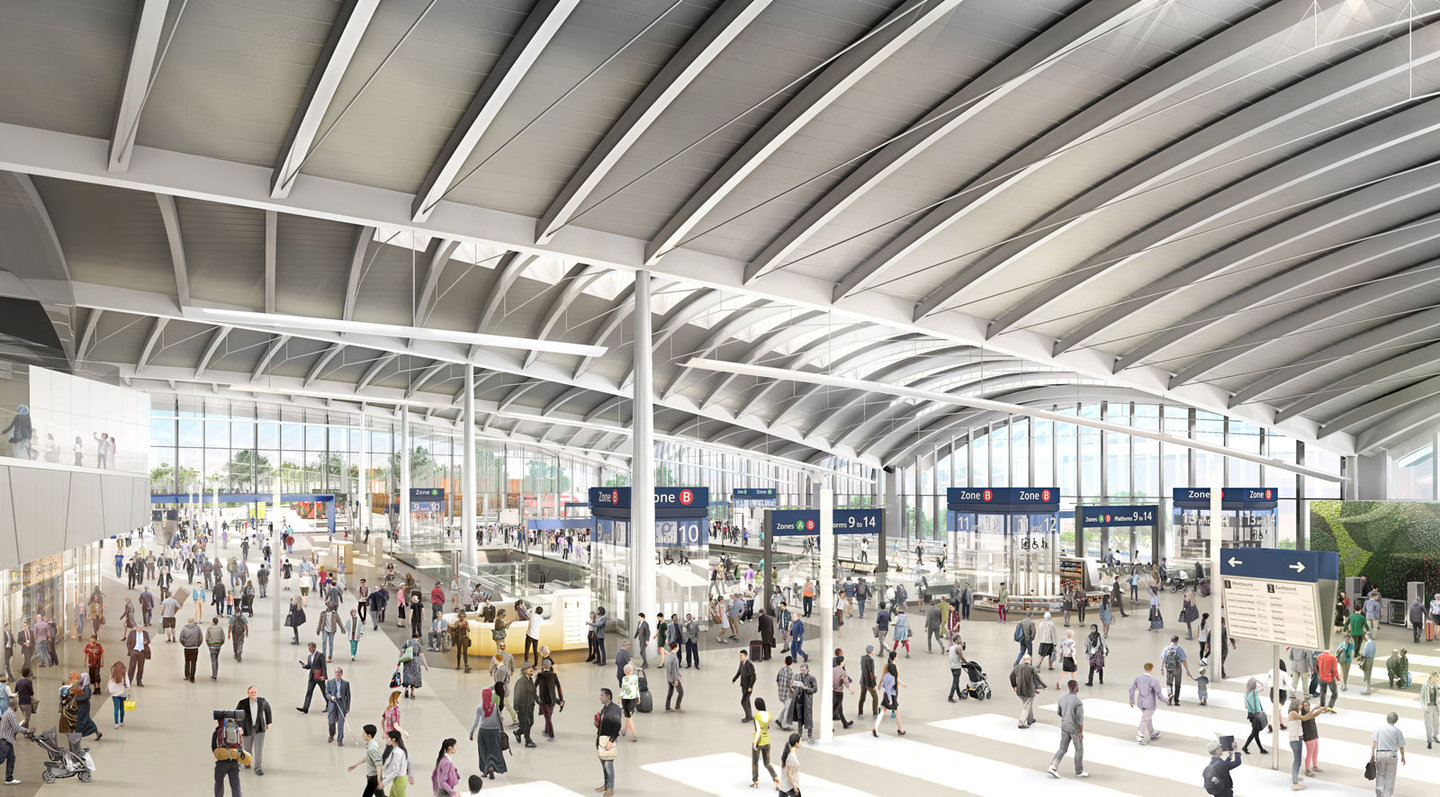
OOC tripple level
The six HS2 platforms will be located underground, accessible by escalator from the station’s main concourse. At surface level, four platforms will be dedicated to Elizabeth Line services, and another four have been earmarked to potentially provide additional rail connections to Wales and the west of England.
“Our design responds to the station’s function, recognising that more than half of those using the station will interchange between the below-ground HS2 and the Elizabeth Line,” said Tooth.
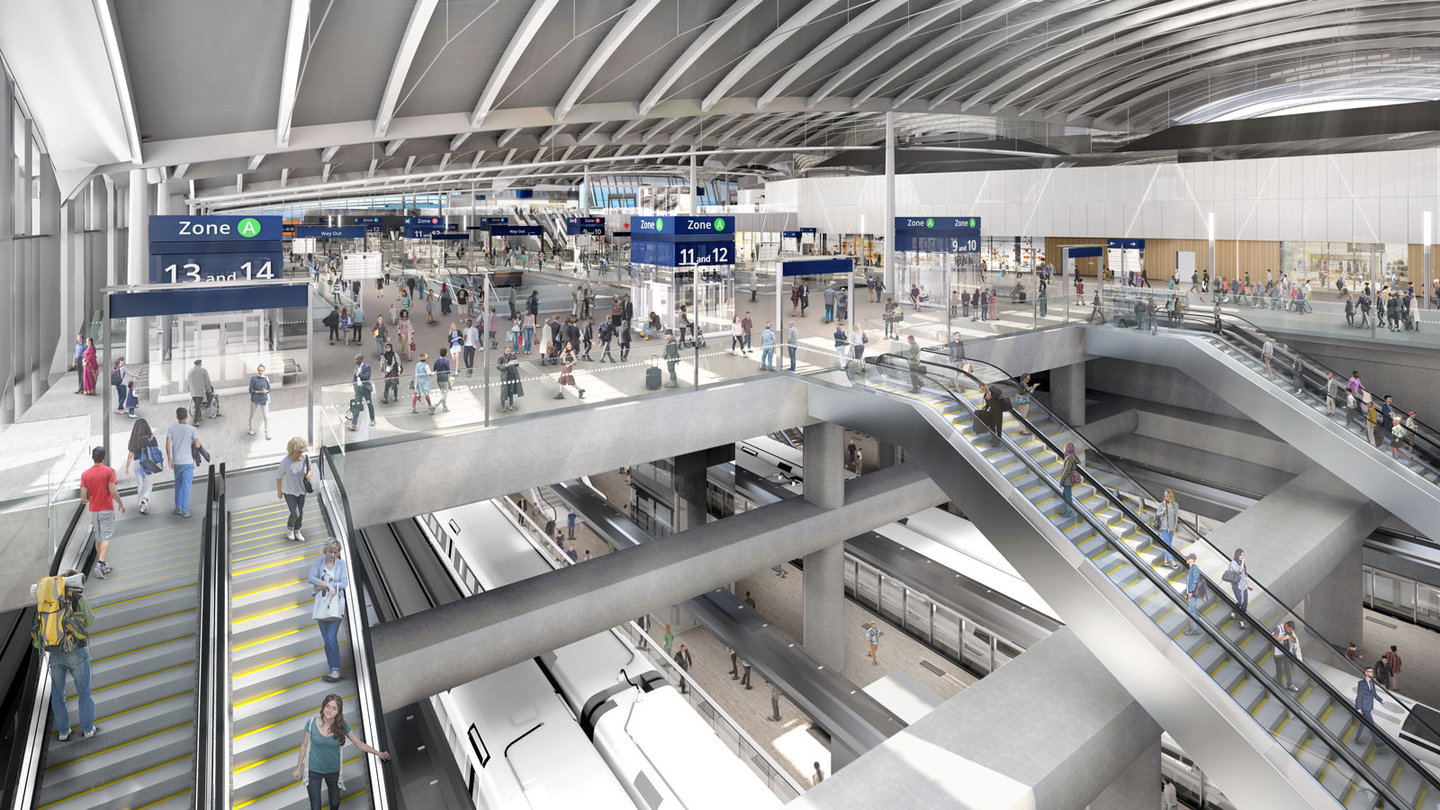
Work at OOC3
Construction at the site is scheduled to start later in 2019. As of now, HS2 is working to clear the site and prepare it for building works to begin, as pictured below. Current works include site clearance, demolition and dismantling of existing buildings, archaeological works and surveys.
The Old Oak Common site will also play an important role in the wider HS2 scheme as the project ramps up, as excavated material from HS2’s tunnelled sections will be brought to the surface here for disposal by rail.
“These designs show how Old Oak Common will set world-class standards for the future of stations,” said the UK government’s HS2 Minister Nusrat Ghani. “The task for our designers and engineers now is to take these ideas from the drawing board to reality, building an iconic station that is accessible, safe and open to all.”
